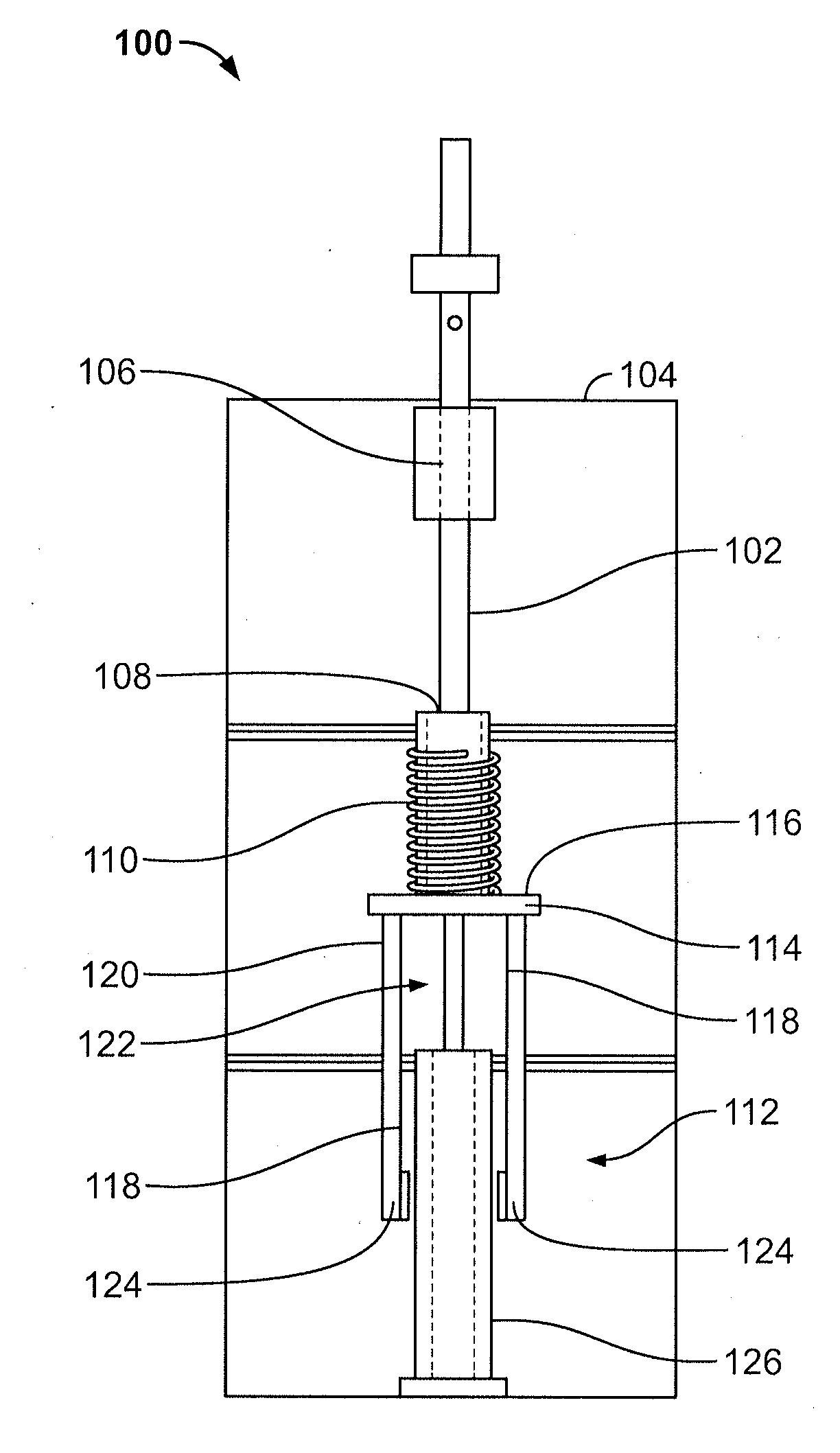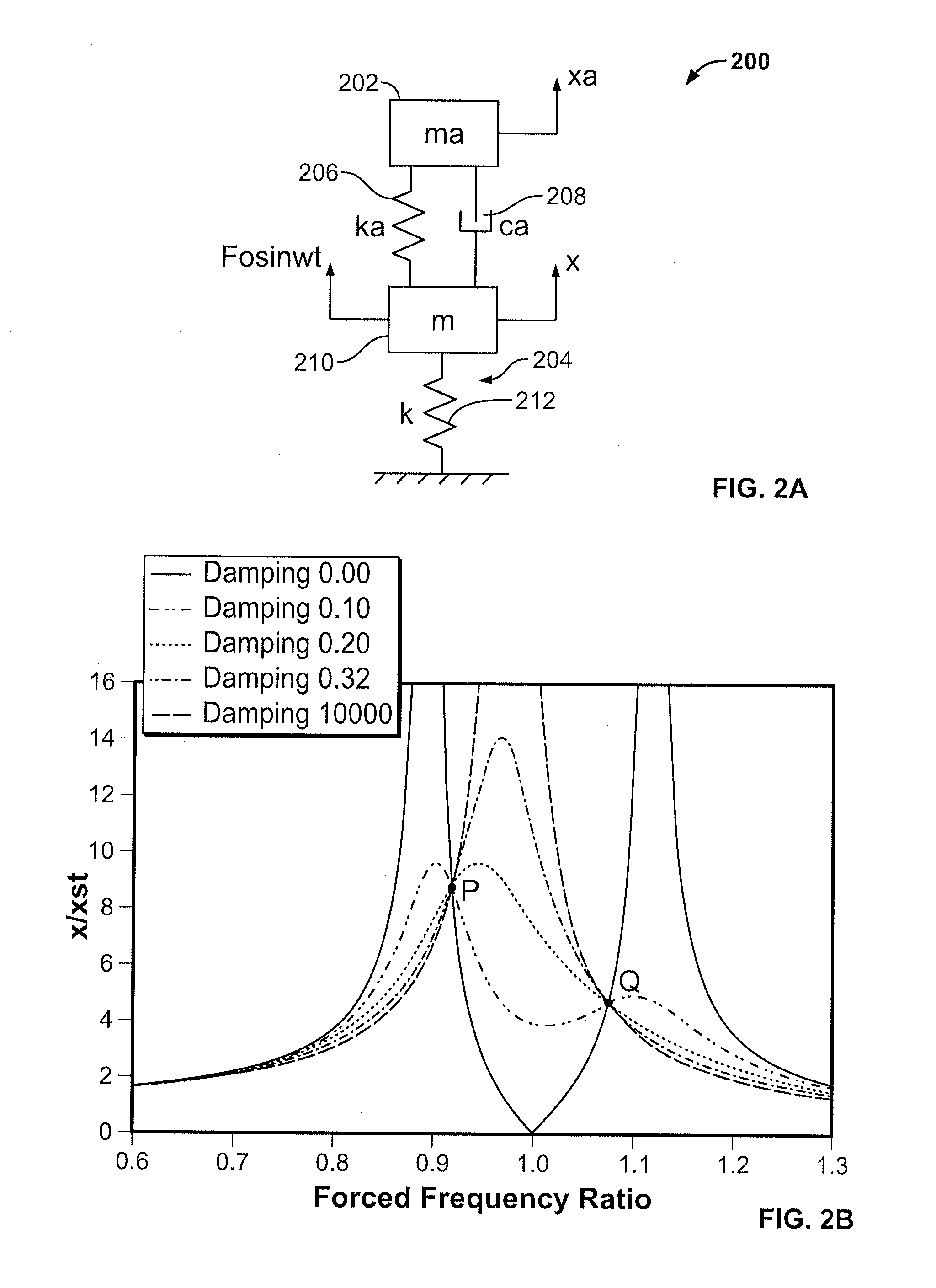Smart Vibration Absorber For Traffic Signal Supports
a traffic signal and vibration absorber technology, applied in the direction of shock absorbers, machine supports, mechanical equipment, etc., can solve the problems of low fundamental natural frequency at which the signal structure will resonate, the cantilevered traffic signal support structure is particularly susceptible to wind induced vibration, and the vertical displacemen
- Summary
- Abstract
- Description
- Claims
- Application Information
AI Technical Summary
Benefits of technology
Problems solved by technology
Method used
Image
Examples
Embodiment Construction
)
[0032]In one embodiment, the present invention is directed to a low-cost vibration mitigation device to reduce fatigue in typical cantilevered traffic signal support structures. Exemplary implementations of the disclosed invention incorporate the concept of a damped vibration absorber to reduce in-plane vibration. In the present invention, the signal heads themselves are modified so that they are no longer rigidly connected to the mast arm but, rather, are allowed to translate vertically relative to the mast arm during mast arm vibration. The signal head mass / member generally functions as a supplemental mass to absorb energy due to wind excitation. The disclosed signal head vibration absorber (SHVA) provides a relatively large supplemental mass to reduce vibration while effectively adding virtually no additional mass to the overall system. The disclosed SHVA thus provides for increased performance and improved robustness when applied to various traffic signal support structures and...
PUM
 Login to View More
Login to View More Abstract
Description
Claims
Application Information
 Login to View More
Login to View More - R&D
- Intellectual Property
- Life Sciences
- Materials
- Tech Scout
- Unparalleled Data Quality
- Higher Quality Content
- 60% Fewer Hallucinations
Browse by: Latest US Patents, China's latest patents, Technical Efficacy Thesaurus, Application Domain, Technology Topic, Popular Technical Reports.
© 2025 PatSnap. All rights reserved.Legal|Privacy policy|Modern Slavery Act Transparency Statement|Sitemap|About US| Contact US: help@patsnap.com



